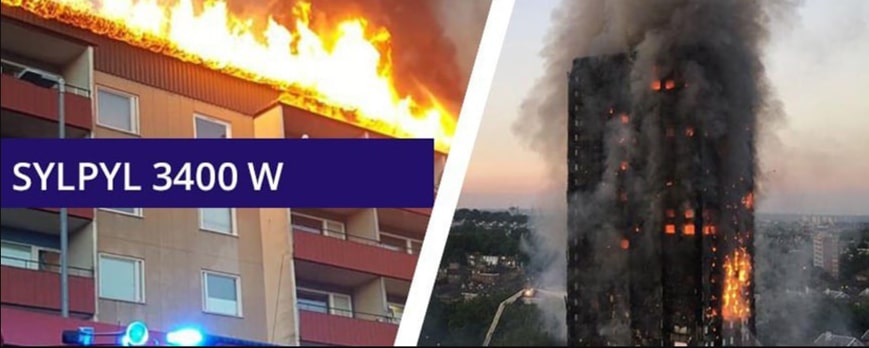We should start by saying that both are different types of paints with their own characteristics and although most people tend to confuse Intumescent Paint with Fireproof Paint.
They are totally different because the latter is used to protect flammable materials (such as wood, for example), isolating them from fire and preventing them from producing gases that contribute to the spread of fire. And on the other hand, the Intumescent Paint is applied to materials that are heat conductors such as steel, preventing these materials from reaching such a temperature that leads to collapse.
That is why, as we can see, both are paints whose qualities give a passive protection against fire to the surfaces where they have been applied.
They are generally used on steel beams and pillars (load-bearing) used in construction.
Next we will see what differentiates them and their application.
Fire-retardant paint:
The flame retardant property, means that it has the quality of not helping the spread of flame or the spread of smoke by combustion.
Fireproof paints, as they do not burn and do not propagate fire, are included in the term “Passive Fire Protection”, since their objective is to prevent the initiation of a fire, avoid its propagation and favor its extinction.
There are also flame-retardant varnishes for woods that require flame-retardant performance.
This type of paint reduces the flammability and combustion of the building materials it coats, and there are several types for coating specific materials; it can be applied on metal, wood, lacquered surfaces, etc. And it can be used for both indoor and outdoor surfaces.
It can be applied by spray, brush or roller.
Intumescent paint:
Intumescent paint is a system of passive protection against fire and its function is that these products, when in contact with heat, are transformed by expanding fifty times its volume due to chemical reactions, thus creating a foaming thermo-insulating layer that prevents the transmission of heat to the element to be protected.
On the other hand, although they do not contribute to extinguish the fire, Intumescent Paints do protect the structure that supports a building in case of fire, delaying its heating and thus giving more time to people to get out in case of fire. If this were implemented in the greatest number of constructions, it would reduce material damages and save many human lives.
This type of paint is usually applied with a gun or brush and resists temperatures of up to 600 degrees Celsius. Its properties are designed to control the fire rather than to fuel it so that appropriate measures can be taken to extinguish it definitively.
Finally, as we can see, although both paints protect against fire, Intumescent Paints offer the best protection, since it has been proven that the estimated temperature for the collapse of steel is 500º C; therefore, if the steel is protected from reaching this temperature, the structure will not lose its bearing capacity during a calculated time, which is very valuable during a fire, since it could be the difference between living or dying, giving the emergency services or firemen a margin to do their job.

